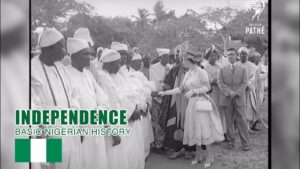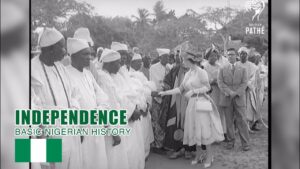
The Ancient Oyo Empire and Its Rise

Introduction
The Oyo Empire was one of the most powerful and influential states in West Africa, dominating much of present-day southwestern Nigeria, parts of Benin, and Togo from the 15th to the 19th century. Known for its sophisticated political system, military strength, and extensive trade networks, Oyo emerged as a dominant force in the Yoruba-speaking world. This article explores the origins, expansion, political structure, and key factors behind the rise of the Oyo Empire.
1. Origins of the Oyo Empire
1.1 Mythological Foundations
According to Yoruba oral tradition, the Oyo Empire traces its roots to Oduduwa, the legendary progenitor of the Yoruba people. His descendants established various Yoruba city-states, with Oranmiyan, one of his sons, playing a crucial role in founding the Oyo Kingdom.
1.2 Early Settlement and the Founding of Old Oyo (Oyo-Ile)
The original Oyo, known as Oyo-Ile (or Oyo-Oro), was established around the 14th century in what is now northern Oyo State. The early Oyo people were initially subordinate to the Nupe Kingdom, which invaded and forced them into exile in the 15th century. However, under the leadership of Oranmiyan’s successors, the Oyo people regrouped and reclaimed their homeland.
2. The Rise of Oyo: Key Factors
2.1 Military Innovations: The Cavalry System
One of the major reasons for Oyo’s rise was its powerful cavalry. Unlike other Yoruba states that relied on infantry, Oyo adopted horse-mounted warriors from the northern Hausa and Nupe regions. The open savannah terrain around Oyo-Ile allowed for effective use of cavalry, giving Oyo a significant military advantage.
2.2 Political Structure: The Alaafin and the Oyo Mesi
The Oyo Empire developed a centralized yet balanced political system:
-
The Alaafin (King): The supreme ruler, considered semi-divine, but his power was checked by councils.
-
The Oyo Mesi (Council of Seven): A group of high chiefs who advised the Alaafin and could remove him if necessary.
-
The Bashorun (Prime Minister): The head of the Oyo Mesi, who wielded significant influence.
-
The Ogboni Society: A secret society that ensured checks and balances in governance.
This system prevented tyranny and maintained stability, allowing Oyo to expand effectively.
2.3 Economic Strength: Trans-Saharan and Atlantic Trade
Oyo grew wealthy through:
-
Trans-Saharan Trade: Oyo exported kola nuts, ivory, and cloth in exchange for salt, horses, and weapons from North Africa.
-
Slave Trade: With the arrival of Europeans, Oyo became a major supplier of slaves to the Atlantic trade, further increasing its wealth.
-
Tributary System: Conquered states paid tribute, enriching the empire.
3. Territorial Expansion and Peak of Power
3.1 Conquest of the Yoruba States
By the 17th century, Oyo had subdued rival Yoruba kingdoms like:
-
Dahomey (modern Benin Republic): Oyo imposed heavy tributes and controlled its trade.
-
Egba and Egbado: These groups became vassal states.
-
Ports like Badagry: Oyo controlled trade routes to the coast.
3.2 The Height of the Empire (18th Century)
At its peak, Oyo’s influence stretched:
-
North: Into Nupe and Borgu territories.
-
West: Over Dahomey.
-
South: To the Atlantic coast, influencing trade with Europeans.
The empire’s military and economic dominance made it one of the largest pre-colonial African states.
4. Decline and Fall of the Oyo Empire
4.1 Internal Strife and Succession Crises
-
The Alaafin’s power struggles with the Oyo Mesi led to instability.
-
Bashorun Gaa’s Reign of Terror (18th century): A powerful prime minister executed multiple Alaafins, weakening central authority.
4.2 External Pressures
-
Fulani Jihad (Early 19th Century): Muslim Fulani warriors from the Sokoto Caliphate attacked northern Oyo territories.
-
Dahomey’s Rebellion: The Kingdom of Dahomey broke free from Oyo’s control.
-
Slave Trade Decline: As Britain abolished the slave trade, Oyo’s economy suffered.
4.3 The Collapse (1830s)
By the 1830s, Oyo-Ile was abandoned after repeated attacks by Fulani and rebel groups. The empire fragmented into smaller Yoruba states, leading to the Yoruba Civil Wars (19th century).
5. Legacy of the Oyo Empire
Despite its fall, Oyo left a lasting impact:
-
Political Influence: Modern Yoruba traditional rulers still trace authority to Oyo.
-
Cultural Heritage: Oyo’s history is preserved in festivals, oral traditions, and art.
-
Military Tactics: Its cavalry strategies influenced later West African warfare.
Conclusion
The Oyo Empire’s rise was fueled by military innovation, strong governance, and economic prowess. However, internal conflicts and external invasions led to its decline. Today, Oyo remains a symbol of Yoruba power and a key chapter in African history.
Thank you for following us incase you find any error in our contents please kindly send us mail or you need additional information you want us to add to any history kindly send us because all what we are posted was generated according to what we see online or we have acknowledged about in this case we can’t perfect in 100% kindly correct us in any aspect you find that’s need.
Noted:- We are not copy from any blog if you fund one your line or content is attach to our post kinky report to our [email protected] and we promise you we are going to rephrase it immediately thanks so much we love you all.
Leave a Reply